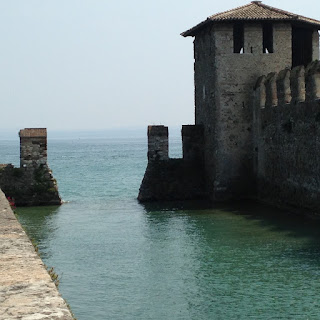The Sirmione castle is the most significant example of the defensive structures on Lake Garda. Between the 13th and 14th centuries, the village of Sirmione was a border town situated between the land owned by the Della Scala dynasty of Verona and the property of the lords of Milan. The original nucleus was delineated by a tall square wall with three towers, and was probably built on top of the remains of a Roman fortress.
In the mid 14th century, the fortified dock was completed and a wall was built around the nearby village. A special construction technique was employed in cui bricks baked in the vicinity were used with stone that came from the nearby hill of Cortine. The golden era of the castle arrived at the end of the 14th century. However, even though it was an extremely important fort, it never became the residence of the court. As wars raged on, the reigning Della Scala family abandoned the castle, and the Venetian Republic took over its administration in 1405. In the centuries that ensued, the development of heavy artillery marked the end of medieval castles, and pentagonal-shaped fortresses with relatively low, thick walls that resisted heavy cannon attacks were built in Peschiera and Sabbioneta.
The fortress was used as a barracks for over three hundred years, and no radical changes were made from 1797 with the advent of Napoleon to the beginning of the 20th century. The castle was renovated several times during World War I.












No comments:
Post a Comment
Note: Only a member of this blog may post a comment.